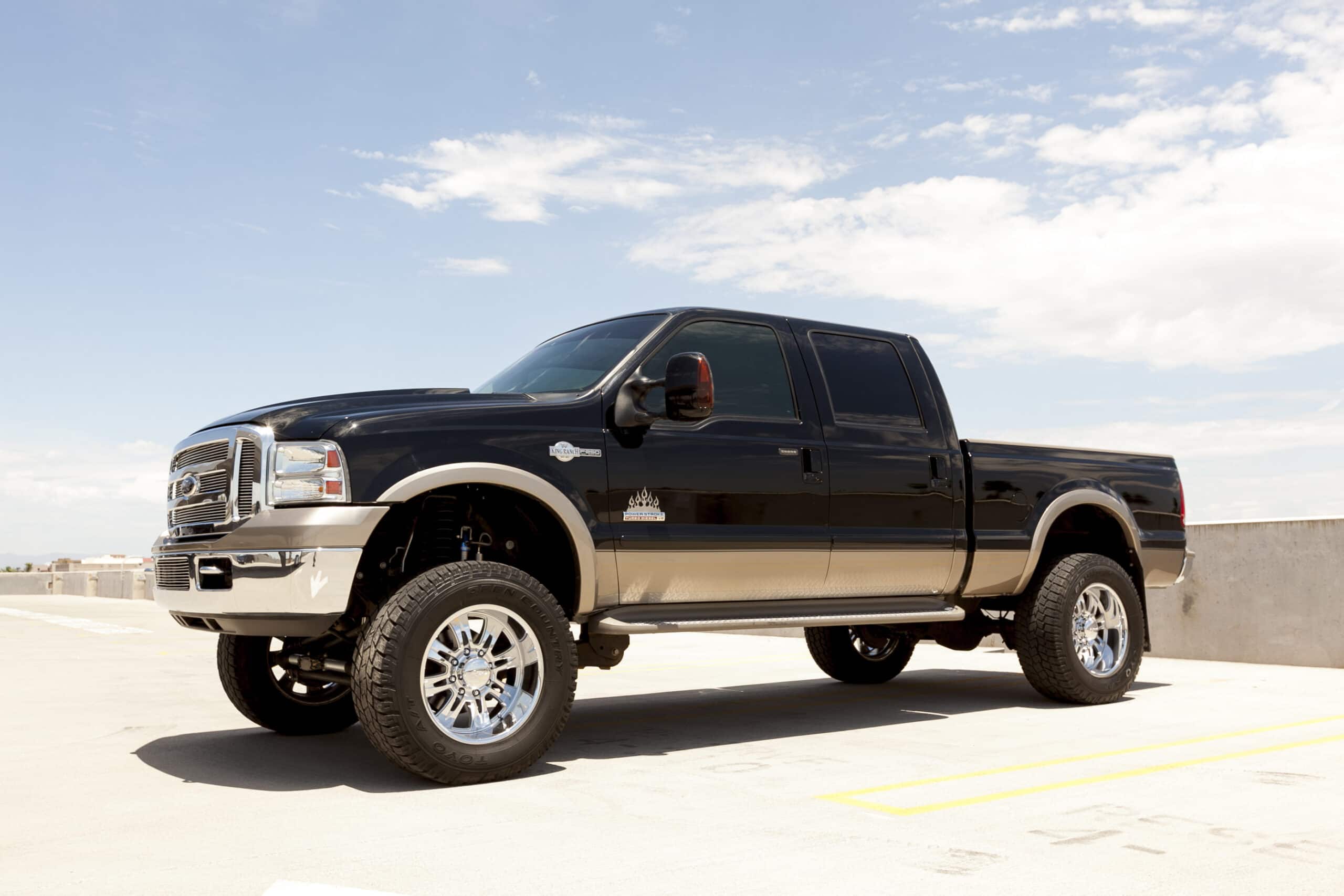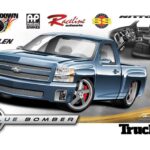The first electronically-controlled transmission from Ford was introduced in 1989 and named the E4OD (E = electronically controlled; 4 = Forward Gears; OD = OverDrive). The E4OD was established on core components of the C6 heavy-duty automatic transmission and was used extensively in several heavy-duty and light vehicles, including the F-150, F-350, F250, and the Bronco. The E4OD came with multiple bolt patterns, which made it incredibly popular for an upgrade or swap. These include big blocks (385 series, not FE), small blocks, modular bolts, and diesel patterns. The 4R100 transmission is rated at 1,000 ft./lbs, which means it is one of the strongest or toughest transmissions ever. Although this is a heavy-duty transmission, the addition of modifications by the owners became one of the weak aspects of the drivetrain.
An Overview of the 4R100 Transmission
The E4OD was updated to the contemporary 4R100 transmission, which is the last rendition of the C6. The 4R100 shares excellent similarities to the E4OD; however, several internal components were adjusted here and there to tackle every durability concern many truck drivers/owners raised. Some issues became visible when this transmission was placed behind the Powerstroke Diesel Engine.
Then, in 1999, 4R100 was enhanced with a PTO (power take-off), which enabled auxiliary equipment to attach readily to heavy-duty vehicles with the transmission. This was when the E4OD was renamed the ‘4R100’ automatic transmission. The 4R100 is a four-speed, heavy-duty automatic transmission that rear-wheel drive trucks with 7.3-liter diesel engine use. It phased out only when the 2003 model – i.e., the 5R110W – dropped. Trucks that carry heavy loads can depend reliably on the 4R100 transmission. The 4R100 and E4OD transmissions share identical gear ratios:
- 1st gear = 2.71 (excellent for trucks that tow heavy loads)
- 2nd gear = 1.54
- 3rd gear = 1:1 ratio
- 4th = 0.71.
The 4R100 is also a computer-controlled transmission that allows users to use hand-held controllers to modify the characteristics or attributes of the automatic transmission. The 4R100 transmission weighs precisely 270lbs. (dry with converter), and every internal component is enclosed in an aluminum case. It has a fluid capacity of 18 quarts Mercon V (complete with torque converter).
Using a hand-held tuner, the owner/user readily adjusts the line pressure, the firmness of the shifts, and the RPM at which the transmission shifts. Of course, truck owners want all shifts to be as seamless as possible. You can even throw beefier tires on your heavy-duty vehicles and readily adjust your transmission settings to account for the larger diameters of these tires.
The 4R100 – and E4OD – were massive automatic transmissions measuring 27.25 inches long. This is why both automatic transmissions do not apply to non-Ford vans and trucks. In addition, shoehorning the 4R100 into another vehicle will require extensive and expensive modifications. This is why Ford matched the transmission to the following engines:
- ’99 to ’03 Ford Expedition SUV comes with the 5.4-liter V-8
- ’99 to ’04 Ford E-Series vans
- ’99 to ’03 Ford Excursion
- ’99 to ’03 Ford F-250, larger Super Duty trucks, etc.
Although the 4R100 and E4OD automatic transmissions have identical exteriors, not every component is interchangeable between these unique units. This is why extra care must be exercised or taken to ensure comprehensive compatibility. Moreover, unlike its predecessor, the 4R100 is equipped with a dedicated output shaft speed sensor planted at the rear end of the transmission. In addition, a pulse-width modulated (PWM) torque converter clutch solenoid was also included in the entire 4R100s in every diesel application and eventually in all 4R100 automatic transmissions.
4R100 Automatic Transmission Upgrades
Although the hand-held tuner offers users several basic adjustments your heavy-duty vehicle needs, some truck owners are not opposed to having additional options. The following accessories are some of the few that can help strengthen your 4R100 transmission:
Shift Improver Kits
Shift improver kits are primarily designed to provide users with up to 3 unique options for adjusting their transmission. You can readily adjust or adapt the tranny for towing capabilities, off-road adventures, and heavy-duty conditions.
Lockup Valve Kits
You should opt for lockup valve kits if you want to prolong the life of the torque converter.
Clutch Disks or Kevlar Bands
Consider clutch disks or Kevlar bands if your primary goal is for your transmission to perform optimally under heavy-duty conditions.
Inline Oil Filter
Consider adding an inline oil filter as it ensures the entry of zero debris into the transmission lines or cooler in case you experience sudden and total tranny failure.
Addition of Extra Capacity
You can help keep the transmission cool or at the optimal temperature by adding extra capacity to it with a steel or aluminum deep transmission pan.
Minimize Transmission Temperature
Use an aftermarket transmission cooler with a built-in electric fan to minimize the transmission’s temperature or keep it as low as possible.
Customize Your Ride
You can customize your ride with hardened pump drive tubes, heavy-duty stall converters, and anti-balloon plates.
Transmission Temperature Gauge
This accessory helps you track the overall temperature of the tranny itself. For example, it alerts you when the temperature is climbing near the maximum 200-degree Celsius mark.
Common Issues Plaguing 4R100 Transmissions
Some of the most common problems 4R100 transmissions experience include delayed gear engagement, a hard shift, especially in lower gears, and stalling the vehicle when shifted into the reverse gear. The reverse input drum often wears out untimely, causing your vehicle to stall in reverse since the transmission cannot correctly engage the gear. Therefore, each time you experience these or any other problems with your 4R100 transmission, ensure a qualified mechanic looks it over for quick and inexpensive repairs.
The Bottom Line
The Ford 4R100 is one of the most reliable, heavy-duty 4-speed automatic transmissions on the market and is used extensively in rear-wheel drive trucks with 7.3-liter diesel engines. It was introduced in 1999 as a successor to the famed E4OD transmission. It could conveniently handle higher torque ratings, solved several electronic issues that plagued its predecessor, the E4OD, and was more durable. Indeed, the 4R100 automatic transmission was ‘bulletproof.’ However, this automatic transmission experiences some issues from time to time. These problems were partly why it phased out and was replaced soon after by the 5R110W.
Ready to experience top-notch transmission solutions and expert support?


